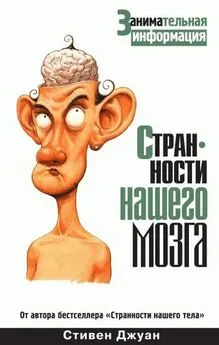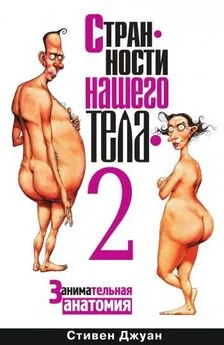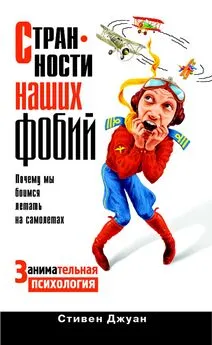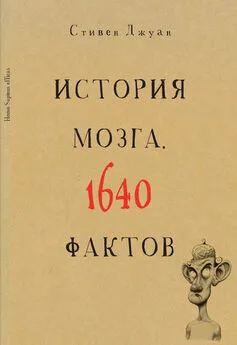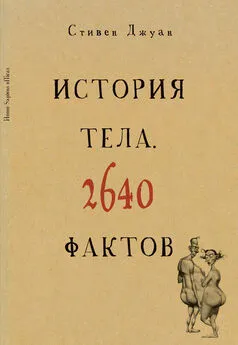Стивен Джуан - Могут ли поцелуи продлить жизнь?
- Название:Могут ли поцелуи продлить жизнь?
- Автор:
- Жанр:
- Издательство:Литагент «РИПОЛ»15e304c3-8310-102d-9ab1-2309c0a91052
- Год:2011
- Город:Москва
- ISBN:978-5-386-02692-9
- Рейтинг:
- Избранное:Добавить в избранное
-
Отзывы:
-
Ваша оценка:
Стивен Джуан - Могут ли поцелуи продлить жизнь? краткое содержание
Доктор Стивен Джуан – ученый-антрополог, автор мировых бестселлеров «Странности нашего тела» и «Странности нашего мозга». Родился и вырос в США, сейчас живет в Австралии, где преподает в университете и выступает на радио и телевидении. В новой книге доктор Джуан продолжает искать объяснение самым странным странностям нашей жизни.
Можно ли доверять детектору лжи?
Почему беременных тошнит по утрам?
Почему одних людей комары кусают чаще других?
Можно ли клонировать неандертальца?
Можно ли определить характер человека по его ушам?
Ответы на эти и другие вопросы вы найдете в этой книге.
Могут ли поцелуи продлить жизнь? - читать онлайн бесплатно ознакомительный отрывок
Интервал:
Закладка:
165
Drs J. A. Gottfried and R.J. Dolan are from the Functional Imaging Laboratory of the Wellcome Department of Imaging Neuroscience in London.
166
J. Gottfried and R. Dolan, ‘The nose smells what the eye sees: Crossmodal visual facilitation of human olfactory perception’, Neuron, 2003, vol. 39, no. 2, pp. 375–386.
167
Drs R.A. Osterbauer, P. Matthews, M. Jenkinson, C. Beckmann, P. Hansen and G. Calvert, are from the Oxford Centre for Functional Magnetic Resonance Imaging of the Brain at Oxford University.
168
R. Osterbauer et al., ‘Colour of scents: Chromatic stimuli modulate odour responses in the human brain’, Journal of Neurophysiology, 2005, vol. 93, no. 6, pp. 3434–3441.
169
Drs S. Lombion-Pouthier, P. Vandel, S. Nezelof, E. Haffen and J. Millot are from the Laboratoire de Neurosciences at the Universite de Franche-Comte in Cedex, France.
170
S. Lombion-Pouthier et al., ‘Odor perception in patients with mood disorders’, Journal of Aff ective Disorders, 2006, vol. 90, nos. 2–3, pp. 187–191.
171
Drs K. Sugiyama, Y. Hasegawa, N. Sugiyama, M. Suzuki, N. Watanabe and S. Murakami are from the Nagoya City University Medical School.
172
K. Sugiyama et al., Smoking-induced olfactory dysfunction in chronic sinusitis and assessment of brief University of Pennsylvania Smell Identifi cation Test and T&T methods’, American Journal of Rhinology, 2006, vol. 20, no. 5, pp. 439–444.
173
S.Juan, ‘Who knows what there is to know about the nose?’, The Register, 17 November 2006.
174
Dr Betty Repacholi is from the Department of Psychology at the University of Washington in Seattle.
175
T. Case, B. Repacholi and R. Stevenson, ‘My baby doesn’t smell as bad as yours: The plasticity of disgust’, Evolution and Human Behaviour, 2006, vol. 27, no. 5, pp. 357–365.
176
Drs V. Curtis, R. Aunger and T. Rabie are from the London School of Hygiene and Tropical Medicine.
177
V. Curtis et al., ‘Evidence that disgust evolved to protect from risk of disease’, Proceedings/Biological Sciences. The Royal Society, 2004, vol. 271, suppl. 4, pp. S131— 133.
178
V. Iannelli, Do Babies Have Sinuses? Your Guide to Pediatrics, About Inc., New York, 4 July 2006.
179
S. Juan, ‘Why do babies always seem to have a runny nose?’, The Register, 28 July 2006.
180
S.Juan, ‘Why do babies often have a runny nose?’, National Post, 13 November 2006, p. 1.
181
S.Juan, ‘Great moments in human research’, The Register, 27 January 2007.
182
S. Juan, ‘Great moments in human research’, The Register, 3 February 2007.
183
D. Feldman, What are Hyenas Laughing at, Anyway? HarperCollins, New York, 1996, p. 61.
184
Dr Noam Sobel is now a professor of psychology at the Helen Wills Neuroscience Institute of the University of California at Berkeley.
185
M. Barraud, ‘Two sides of it’, New Scientist, 6 November 1999, p. 6.
186
L. Watson, Jacobson’s Organ and the Remarkable Nature of Smell, WW. Norton, New York, 2000.
187
L. Lowndes, How to Make Anyone Fall in Love With You, McGraw-Hill, New York, 1997, p. 293.
188
S. Juan, ‘Vomeronasal organ: Dead or alive?’, The Register, 9 May 2006.
189
Drs D.M. Bautista, P. Movahed, A. Hinman, H. Axelsson, O. Sterner, E. Hogestatt, D. Julius, S. Jordt and P. Zygmunt are from the Department of Cellular and Molecular Pharmacology at the University of California in San Francisco.
190
D. Bautista et al., ‘Pungent products from garlic activate the sensory ion channel’, Proceedings of the National Academy of Science, 2005, vol. 102, no. 34, pp. 12248—12252.
191
T. Mendham, Garlic Breath, Garlic Central, Edinburgh, 9 November 2006.
192
S. Juan, ‘Who knows what there is to know about the nose?’, The Register, 17 November 2006.
193
Dr Hans Wohlmuth is from the School of Natural and Complementary Medicine at Southern Cross University in Australia.
194
Personal communication, 9 November 2006.
195
Dr P. Josling is from the Garlic Centre in Battle, East Sussex, UK.
196
P. Josling, ‘Preventing the common cold with a garlic supplement: A double-blind, placebo-controlled survey’, Advances in Therapy, 2001, vol. 18, no. 4, pp. 189–193.
197
S. Juan, ‘Does garlic ward off the common cold?’, The Register, 24 November 2006.
198
Drs L. Pelz and B. Stein are from the Medical Branch of the University of Rostock in Germany.
199
L. Pelz and B. Stein, ‘Clinical assessment of ear size in children and adolescents’, Padiatrie und Grenzgebiete, 1990, vol. 29, no. 3, pp. 229–235.
200
Dr James Heathcote is a general practitioner from Kent in the UK.
201
J. Heathcote, ‘Why do old men have big ears?’, British Medical Journal, 1995, vol. 311, p. 1668.
202
Dr Yashhiro Asai is a physician at the Futanazu Clinic in Misaki in Japan.
203
Y. Asai, M. Yoshimura, N. Nago and T. Yamada, ‘Correlation of ear length with age in Japan’, British Medical Journal, 1996, vol. 312, p. 582.
204
Dr V.F. Ferrario, C. Sforza, V. Ciusa, G. Serrao and G. Tartaglia are from the Functional Anatomy Research Centre at the University of Milan in Italy.
205
V. Ferrario et al., ‘Morphometry of the normal human ear: A cross-sectional study from adolescence to midadulthood’, Journal of Craniofacial Genetics and Developmental Biology, 1999, vol. 19, no. 4, pp. 226–233.
206
M. Woods, As we age and shrink, our ears grow on’, Post Gazette (Pittsburgh), 4 November 2003, pp. 1–2.
207
S. Juan, ‘Do our ears grow longer with age?’, The Register, 26 May 2006.
208
S. Juan, ‘Yes, your ears are growing’, National Post, 26 June 2006, pp. 1–2.
209
Dr Steven Mithen is a professor of early prehistory at the University of Reading in the UK.
210
S. Mithen, The Singing Neanderthals: The Origins of Music, Language, Mind and Body, Weidenfeld & Nicholson, London, 2005, pp. 172–173.
211
S. Mithen, ‘Moved by the music’, New Scientist, 16 July 2005, pp. 46—7.
212
C. Sutton, How Did They Do That? Quill, New York, 1985, pp. 261–264.
213
Dr P.D. Shearer is from the St Jude Children’s Research Hospital in Memphis, Tennessee.
214
P. Shearer, ‘The deafness of Beethoven: An audiologic and medical overview’, American Journal of Otology, 1990, vol. 11, no. 5, pp. 370–374.
215
Drs C.S. Karmody and E.S. Bachor are from the Tufts University School of Medicine in Boston.
216
C. Karmody and E. Bachor, The deafness of Ludwig van Beethoven: An immunopathy’, Otology and Neurotology, 2005, vol. 26, no. 4, pp. 809–814.
217
Dr R.H. Ratnasuriya is a psychologist at the Bethlem Royal and Maudsley Hospital in London.
218
R. Ratnasuriya, ‘Joan of Arc, creative psychopath: Is there another explanation?’, Journal of the Royal Society of Medicine, 1986, vol. 79, pp. 234–235.
219
Dr D.A. Moore is the medical services director of the Scottish and Newcastle Breweries in Edinburgh, Scotland.
220
D. Moore, ‘Response to “Joan of Arc, creative psychopath: Is there another explanation?” ‘Journal of the Royal Society of Medicine, 1986, vol. 79, p. 560.
221
Dr Rudolph Bell is a historian at Rutgers University in Chicago.
222
R. Bell, Holy Anorexia, University of Chicago Press, Chicago, 1985.
223
Drs E. Foote-Smith and L. Bayne are from the Department of Neurology at the University of California in San Francisco.
224
E. Foote-Smith and L. Bayne, ‘Joan of Arc’, Epilepsia, 1991, vol. 32, no. 6, pp. 810–815.
225
Dr Maggie Phillips is a psychologist in Oakland, California.
226
M. Phillips, Joan of Arc meets Mary Poppins: Maternal renurturing approaches with male patients in Ego-State Therapy’, American Journal of Clinical Hypnosis, 2004, vol. 47, no. 1, pp. 3—12.
227
S. Juan, ‘Joan of Arc’s secret’, National Post, 24 April 2006, pp. 1–2.
228
D. Fucci, L. Petrosino, B. Hallowell, L. Andra and C. Wilcox, ‘Magnitude estimation scaling of annoyance in response to rock music: Eff ects of sex and listeners’ preference’, Perceptual & Motor Skills, 1997, vol. 84, no. 2, pp. 663–670.
229
J. Kellaris and R. Kent, An exploratory investigation of responses elicited by music varying in tempo, tonality and texture’, Journal of Consumer Psychology, 1993, vol. 2, no. 4, pp. 381–401.
230
Dr John Manning is from the School of Biological Sciences at the University of Liverpool in the UK.
231
Reuters, ‘Ears a way to show men’s wretched moods’, Daily Telegraph (Sydney), 24 July 1997, p. 26.
232
S.Juan, ‘The Odd Body: Can you judge a person by their ears?’, Epoch Times, 18 October 2006, p. 16.
233
S. Juan, ‘Can you judge someone’s personality by the shape of their ears?’, The Register, 27 October 2006.
234
S.Juan, ‘Great moments in human research’, The Register, 27 January 2007.
235
S.Juan, ‘Great moments in human research’, The Register, 3 February 2007.
236
Drs L.E. Cuevas and C.A. Hart are from the Department of Tropical Paediatrics at the Liverpool School of Tropical Medicine at the University of Liverpool, UK.
237
Интервал:
Закладка:


